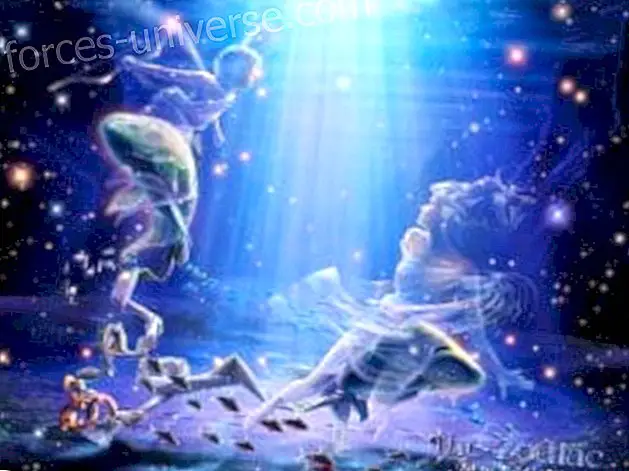
The Canadian neuroscientist explains why researchers have come together to sign a manifesto recognizing the existence of consciousness in all mammals, birds and other creatures, such as octopus, and c How this discovery could impact society. Veja / AnimaNaturalis
Canadian neuroscientist Philip Low gained prominence in the scientific press after presenting a project with physicist Stephen Hawking, 70. Low wants to help Hawking, who has been completely paralyzed for 40 years because of a degenerative disease, and that is why he can only communicate with the mind. The results of the study were revealed last Saturday at a conference in Cambridge. However, the main purpose of the meeting was another. In it, neuroscientists around the world signed a petition stating that all mammals, birds and other creatures, including octopus; They have conscience. Stephen Hawking was present at the signing dinner of the manifesto as guest of honor.
Philip Low: "All mammals and birds are aware."
Low is a researcher at Stanford University and MIT (Massachusetts Institute of Technology), both places are in the United States. He and 25 other researchers believe that brain structures that produce consciousness in humans also exist in animals. "The brain areas that distinguish us from other animals are not the ones that produce consciousness, " says Low, who granted the following interview to a web page:
Interviewer: Studies on animal behavior have claimed that several animals have a certain degree of awareness. What neuroscience says about it?
Low: We discovered that structures that distinguish us from other animals, such as the cerebral cortex, are not responsible for the manifestation of consciousness. Simply put, if the rest of the brain is responsible for consciousness and those structures are similar between humans and other animals, such as mammals and birds, we conclude that these animals are also conscious.
Interviewer: What animals are aware?
Low: We know that all mammals, all birds and many other creatures, such as octopus, have the nervous structures that produce consciousness. This means that these animals suffer. It is an awkward truth: it was always easy to say that animals have no conscience. We now have a group of respected neuroscientists who study the phenomenon of consciousness, animal behavior, neural network, anatomy and genetics of the brain. Now you can not say that we did not know it.
Interviewer: Is it possible to measure the similarity between the consciousness of mammals and birds and that of human beings?
Low: This question has been left open in the manifesto. We do not have an indicator, given the nature of our approach. We know there are different kinds of conscience. We can say, however, that the ability to feel pain and pleasure in mammals and humans is very similar.
Interviewer: What kind of animal behavior supports the idea that they are aware?
Low: When a dog is afraid or feels pain or happiness when seeing its owner, structures similar to those activated in humans are activated in its brain when we show fear, pain and pleasure. A very important behavior is the self-recognition in the mirror. Among the animals that can do it, in addition to humans, there are dolphins, chimpanzees, bonobos, dogs and a species of bird called pica-pica.
Interviewer: What benefits could arise from the understanding of consciousness in animals?
Low: Here is a certain irony. We spend a lot of money trying to find intelligent life outside the planet while we are here; surrounded by conscious intelligence on the planet itself. If we consider that an octopus - which has 500 million neurons (human beings have 100 billion) - manages to raise awareness, we are much closer to producing a synthetic awareness than we thought. It is much easier to produce a model with 500 million neurons than 100 billion. In other words, these synthetic models may be easier now.
Interviewer: What is the ambition of the manifesto? Have neuroscientists become militants of the animal rights movement?
Low: This is a sensitive matter. Our role as scientists is not to say what society should do, but we make public what we discover. Society will now have a discussion about what is happening and will be able to decide whether to formulate new laws, conduct more research to understand the conscience of animals or protect them in some way. Our role is to publicize the data.
Interviewer: Did the manifesto's conclusions have any impact on your behavior?
Low: I think I'm going to become a vegetarian. It is impossible not to feel touched by this new perception about animals, especially about their experience of suffering. It will be difficult, because I love cheese.
Interviewer: What can change with the impact of this discovery?
Low: The data is disturbing, but very important. In the long run, I think that society will depend less on animals. It will be better for everyone. Let me give you an example. The world spends 20 billion dollars a year killing 100 million vertebrate animals in medical research. The probability that a drug from these studies will be effective in humans is 6%. It is a very bad probability. A first step consist in developing non-invasive procedures. I don't think it is necessary to take lives to study life. I think we have to appeal to our own ingenuity and develop better technologies that respect the lives of animals. We have to put technology in a position that serves our ideals, instead of competing with them.






